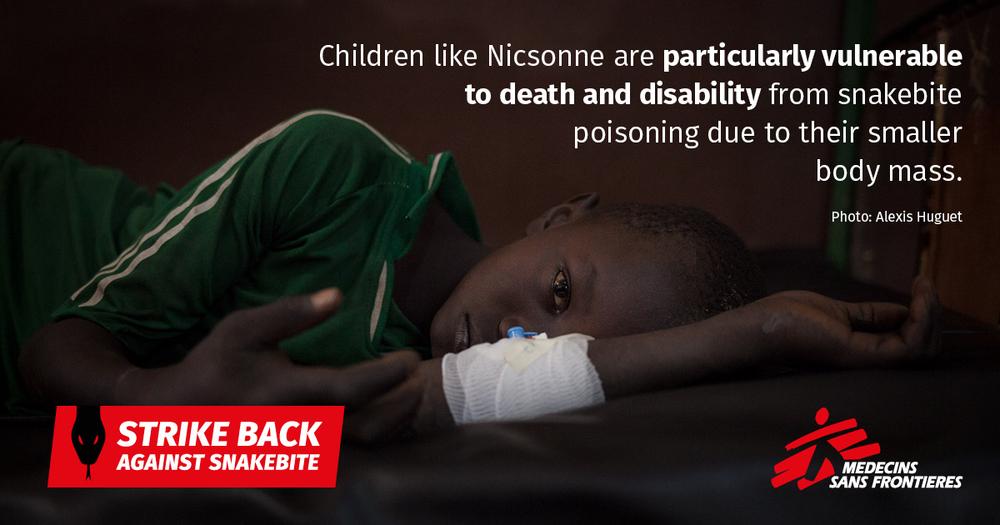Three-year-old Alina was playing with her older brothers and sisters in their backyard when her father heard a loud cry. Rushing outside, he found Alina lying on the ground. No one knew what had happened, but she was drowsy and in physical discomfort; her father could see that something was very wrong. Picking up his daughter, he ran to the nearest health centre, by which time she was having difficulties breathing. Alina was diagnosed with pneumonia and started on antibiotics; within a few hours, her condition had deteriorated and she was transferred to hospital by motorbike. By the time they arrived, Alina was dead. That was in February.
Some months later, as seven-year-old Kipchoge was taking his family’s goats out to graze, he was bitten on the right toe by a snake. His mother immediately tied a tourniquet on his leg to stop the blood flow and took the boy to a clinic five kilometres from their home. At the clinic, a trained doctor administered antivenom and, a few days later, Kipchoge was able to return home.
Both children were from the same region of Kenya: Toplin, in Tiaty East sub-county, Baringo county, and both were bitten by poisonous snakes. But Kipchoge was lucky enough to have a parent who knew some basic first aid for snakebites, a doctor who knew how to diagnose and treat the condition, and a clinic nearby that was stocked with effective antivenom. As a result, one child is alive and, the other is dead.
Alina was most likely bitten by a black mamba, a poisonous snake common to the area where she lived. Its venom shuts down the nervous system and quickly paralyses the respiratory muscles. Without treatment, it leads to certain death. But if Alina had been diagnosed quickly and received the right treatment, she could have been saved.
When Alina died, the risks posed by venomous snakes were already a concern in Baringo county. There, as elsewhere in the country, contact between humans and wild animals is increasing as both struggle to access shared resources, with a resulting increase in people being bitten by poisonous snakes.

After a worried local resident raised the alarm, a medical and community outreach team visited the area, along with Ministry of Health staff from the county and sub-county and local partners. They conducted a community survey to gauge the extent of the problem, and educated local people about how to prevent and manage snakebites. And, very importantly, they brought with them supplies of antivenom.
Public health facilities across Baringo county experience regular shortages of antivenom, making them poorly prepared to deal with an increase in snakebites. Access to antivenom – let alone access to antivenom that is effective against the species of poisonous snake found in any particular area – is a problem not just in Baringo but across most of Africa.
Globally, a reported 2.7 million people suffer from snakebite envenoming every year. Of those, more than 140,000 die and another 500,000 are permanently disabled. The actual figures are likely to be much higher, as disease surveillance in many rural parts of Africa and Asia – where most poisonous snakes are found – is chronically under-resourced and health staff frequently lack the skills to diagnose snakebite. Alina’s death would have been put down to pneumonia if it had not been for the careful clinical officer on call that day.
For the sake of Alina, and for the hundreds of thousands like her, it is time for action. The World Health Organization has added snakebite envenoming to its list of neglected tropical diseases, and in May it launched a roadmap to improve the control of venomous snakebites. The next vital steps are strengthening surveillance and data collection to reinforce the clinical management of snakebite victims; boosting the number of staff trained to diagnose and treat snakebite; providing a steady supply of affordable anti-venoms that are effective against the specific snakes found in the region; and educating local communities on how to reduce the risk of snakebites and how to provide first aid if someone is bitten.
Meanwhile snakebite survivors, who may face a future with a chronic wound or amputated limb, need to be treated holistically, receiving both physical and psychological support. Only with these measures will we be able to successfully manage the care of snakebite survivors like Kipchoge and save the lives of victims like Alina.
* Names have been changed.
MSF has worked continuously in Kenya since 1987, initially to support its medical activities in Sudan during the civil war. Since 1991, MSF has provided assistance to refugees arriving in Kenya from Somalia and South Sudan while providing emergency medical services for the most vulnerable population groups in the country. MSF is also involved in furthering medical expertise and innovation, with a focus on neglected populations and public health challenges. For example, MSF was the first organisation in Kenya to provide free antiretroviral (ARV) treatment for HIV in public health facilities in 2001. In 2014, MSF used the new anti-tuberculosis drug bedaquiline for the first time in Kenya to treat a patient suffering from an extensively drug-resistant strain of the disease
